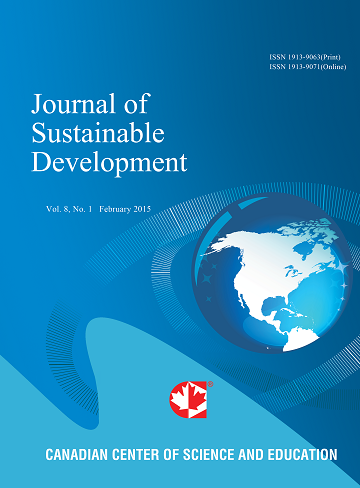The Relationship between Architects’ Quality of Work Life and Their Productivity: A Case Study
- Elnaz Shirvanisaadatabadi
- Ayda Gharaei
Abstract
The goal of quality of work life is to evaluate how employees perceive their lives inside a company. Lack of quality of work life is linked to greater levels of occupational stress, anxiety, and burnout, leading to poorer job performance and substantial expenses for organizations. Bearing this in mind, the current study was formulated to address the gap in the literature and examine the relationship between architects’ Quality of Work Life and their productivity throughout a case study in Kerman, eastern Iran. To fulfil the objectives of this study, 130 architects working actively and officially in Kerman agreed to participate in the study, who were reached out using the Krejcie, and Morgan’s (1970) table. Two questionnaires in Persian Version were distributed among them, including Quality of work life questionnaire based on Walton model (1973) and the Productivity questionnaire based on the ACHIEVE model, both adopted from Chalabiei (2017). The data was transferred to SPSS Version 27 for further statistical analyses. The results of the Spearman's correlation coefficient test showed that there was a positive correlation between the quality of work life and the architects’ productivity. Also, all the eight components of quality of work life had a positive relationship with the architects’ productivity. Further implications of the study results and suggestions are discussed, accordingly.
- Full Text:
 PDF
PDF
- DOI:10.5539/jsd.v18n3p60
Journal Metrics
Index
- Academic Journals Database
- ACNP
- AGRICOLA
- ANVUR (Italian National Agency for the Evaluation of Universities and Research Institutes)
- Berkeley Library
- CAB Abstracts
- CNKI Scholar
- COPAC
- CrossRef
- DTU Library
- EBSCOhost
- Elektronische Zeitschriftenbibliothek (EZB)
- EuroPub Database
- Excellence in Research for Australia (ERA)
- Genamics JournalSeek
- GETIT@YALE (Yale University Library)
- Ghent University Library
- Google Scholar
- Harvard Library
- INDEX ISLAMICUS
- Infotrieve
- Jisc Library Hub Discover
- JournalGuide
- JournalTOCs
- LOCKSS
- Max Planck Institutes
- MIAR
- Mir@bel
- NewJour
- Norwegian Centre for Research Data (NSD)
- Open J-Gate
- PKP Open Archives Harvester
- Pollution Abstracts
- Publons
- Pubmed journal list
- RePEc
- ROAD
- SafetyLit
- Scilit
- SHERPA/RoMEO
- Standard Periodical Directory
- Stanford Libraries
- UCR Library
- Ulrich's
- UniCat
- Universe Digital Library
- UoS Library
- WJCI Report
- WorldCat
- WorldWideScience
- Zeitschriften Daten Bank (ZDB)
Contact
- Sherry SunEditorial Assistant
- jsd@ccsenet.org
